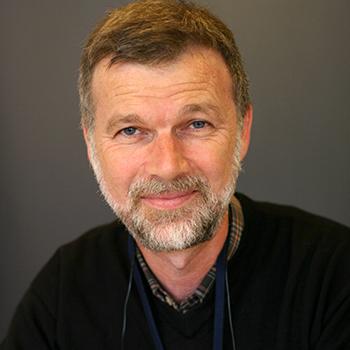“At The Union we focus on what is possible in the field and sustainable in the long run. The bottom line is always ‘How will this help TB control?”

A decade ago, when Dr Armand Van Deun began to work with Uganda’s tuberculosis laboratory network, it was rated very poorly. “Since then,” he says, “they have worked very hard and their national reference laboratory has become a centre of excellence in the Africa Region”.
In July 2013, the efforts of the Ministry of Health, technical advisors such as The Union and international donors came to fruition. The Uganda National TB Reference Laboratory (NRL) became East Africa’s first Supranational Reference Laboratory (SRL), one of a network of 29 SRLs worldwide.
This was a significant moment for Van Deun, head of The Union's Laboratory Strengthening Unit. But his goal over the past two decades has been to improve not only reference laboratories, but also laboratories at every level of the network. His attention is equally engaged by examining slides in a village laboratory as by navigating the SRL accreditation process.
The critical importance of quality microscopy became evident to him as a young doctor, working with The Union's Dr Karel Styblo in Tanzania and Rwanda. He witnessed the birth of the first national tuberculosis programmes in the early 1980s and participated in the research that led to the DOTS strategy (directly observed therapy, short course). TB diagnosis using acid-fast bacilli (AFB) smear microscopy was one of the pillars of this strategy.
In 1994, Van Deun went to Bangladesh as Medical Director of the Damien Foundation's TB/leprosy project. There he pioneered the efficient organization of External Quality Assurance (EQA) to help TB microscopy laboratories regulate their performance.
He published a paper in the International Journal of Tuberculosis and Lung Disease in 1998 that outlined what he saw required: a network of peripheral laboratories with well-trained staff, clear guidelines, ample supplies, regular supervision and random rechecking or panel testing to ensure ongoing quality. The US Centers for Disease Control (CDC) took up the idea, which led to the establishment of international guidelines, published in 2002.
As a researcher for the Institute of Tropical Medicine in Antwerp since 1999 and consultant to The Union since 2001, Van Deun has worked tirelessly to help low-income countries implement EQA through site reviews; training; the development of national guidelines, strategic plans and funding applications; and operational research.
New developments, such as new TB diagnostic tools, have contributed fresh opportunities and challenges, but he believes that maintaining high-quality AFB smear microscopy remains essential because it is still the fundamental method for TB control across all settings.
"At The Union we keep the focus on what is possible in the field and sustainable in the long run," he says. "The bottom line always has to be 'How will this help TB control?'"
With the vast majority of TB cases still diagnosed by AFB smears, Van Deun has recently been revising the microscopy manual with colleagues from partner organisations and institutions, to make it even "more correct and less complicated". The new edition will be launched at the 44th Union World Conference on Lung Health in Paris, France on 30 October–3 November this year.

Dr Armand Van Deun received the 2010 Stop TB Kochon Prize for educating a generation of laboratory leaders and overseeing improvements in laboratory work that have saved untold thousands of lives.
Photo: Arkepix
